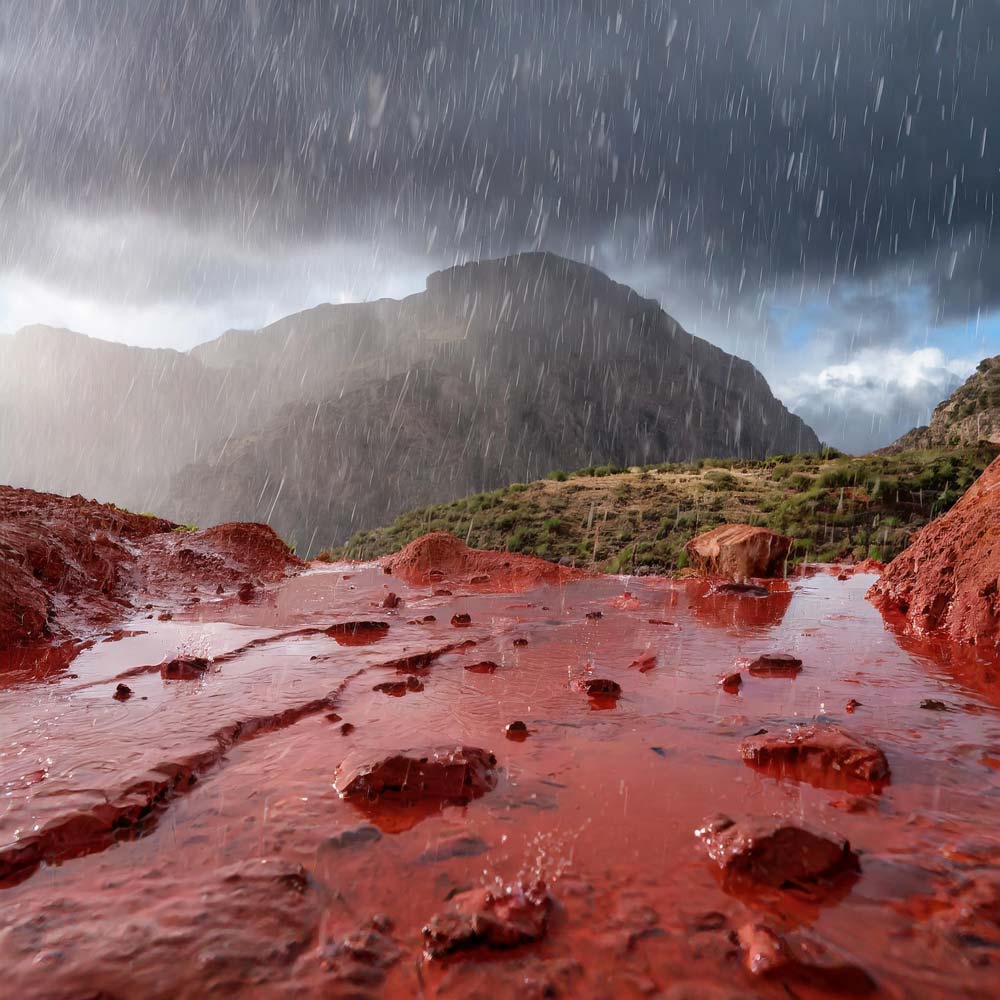In 2012, Sri Lanka experienced a meteorological event that captured global attention: red rain fell from the sky, staining everything it touched with a crimson hue. This bizarre phenomenon sparked both curiosity and concern, leading scientists on a quest to unravel its mysteries. What caused the rain to turn red, and what did it signify?
The Phenomenon Unfolds
The story begins on November 14, 2012, when residents of several villages in Sri Lanka were startled by the sight of red rain falling from the heavens. Initially dismissed as a localized anomaly, the phenomenon soon gained widespread attention as reports and samples flooded in from across the affected region. The crimson downpour continued intermittently for over two months, baffling both locals and scientists alike.
Theories and Speculations
In the early stages, speculation ran rampant, with theories ranging from pollution to extraterrestrial origins. Some proposed that the rain was the result of industrial contamination or a volcanic eruption, while others suggested it was evidence of microbial life from outer space.
Scientific Investigations
As the red rain persisted, scientific teams descended upon Sri Lanka to investigate the phenomenon. Their first task was to analyze the chemical composition of the rainwater and identify any potential contaminants or unusual substances. Initial tests revealed the presence of microscopic red particles suspended in the water, but their origin remained elusive.
Alien Life or Terrestrial Origins?
One of the most sensational theories put forward was the notion that the red rain was evidence of extraterrestrial life. This hypothesis gained traction due to the peculiar appearance of the particles and their resistance to conventional analysis techniques. However, further scrutiny revealed a more down-to-earth explanation.
The Algal Connection
After months of rigorous investigation, scientists determined that the red particles were, in fact, organic in nature. Further analysis revealed that they were most likely airborne spores originating from a species of terrestrial algae known as Trentepohlia annulata. This algae is commonly found in tropical regions and is known to thrive in humid conditions.
Atmospheric Transport Mechanism
But how did these algae spores end up in the atmosphere and subsequently fall as red rain? Scientists proposed that the spores were lifted into the air by strong winds or updrafts, where they became suspended in the clouds. Subsequent precipitation events then brought them back to the ground, coloring the rain with their distinctive hue.
Implications and Significance
While the red rain phenomenon may not have been extraterrestrial in origin, it nonetheless provided valuable insights into atmospheric processes and the resilience of microbial life. The discovery of algae spores in the upper atmosphere challenged conventional assumptions about the limits of microbial dispersal and survival.
Environmental Concerns
The red rain event also raised concerns about the potential impact of airborne algae on human health and the environment. While Trentepohlia annulata is not known to be harmful, its presence in the atmosphere could have unforeseen consequences, particularly for sensitive ecosystems and agricultural regions.
Conclusion
The mystery of Sri Lanka’s red rain has been largely solved, thanks to the diligent efforts of scientists and researchers. What initially appeared to be a cosmic enigma turned out to have a decidedly terrestrial explanation, rooted in the natural processes of our planet. While the red rain may have faded into memory, its legacy endures as a testament to the enduring allure of scientific discovery and the mysteries that lie just beyond our grasp.

